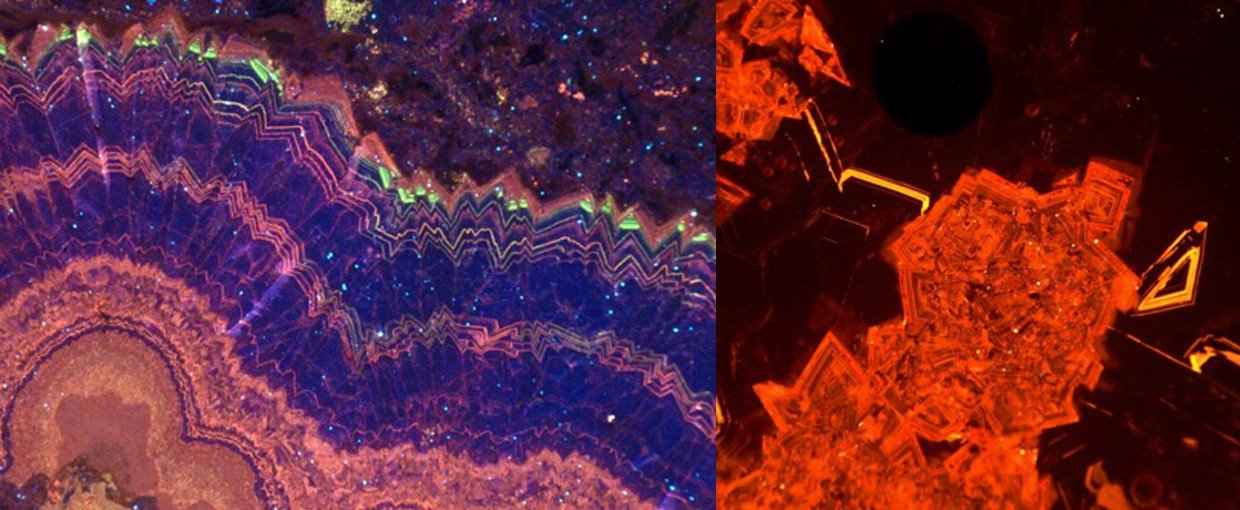Written byAaron Gronstal

Dec. 5, 2018
Research Highlight
Oxygenation, Land Plants, and the Ocean-Atmosphere System

Cathodoluminescence image of dolomite marine cements showing well-preserved chemical zonation(left). Photo of Devonian shallow marine carbonates under cathodoluminescence (right).Image credit: Ashleigh Hood.
Researchers have used rare earth element patterns in marine carbonates to reveal details about the role of land plants in shaping Earth’s ocean-atmosphere system. The team tracked seawater oxygen levels as animals and early plants appeared and diversified on land. The results indicate that ocean oxygenation increased a relatively small amount during the Ediacaran (635 to 541 million years ago), and decreased during the early Cambrian. Oceans anoxia then persisted during through the mid Palaeozoic, and it wasn’t until the Late Devonian, when large land plants first evolved, that ocean oxygenation reached levels similar to today. The results support the idea that the oxygenation of Earth was not a simple two-stage process, and that land plants (not animals) may be responsible for the oxygenation conditions present on Earth today.
The study, “Oxygenation history of the Neoproterozoic to early Phanerozoic and
the rise of land plants,” was published in the journal Earth and Planetary Science Letters. Co-author Ashley Hood was supported through a NASA Astrobiology Postdoctoral fellowship.